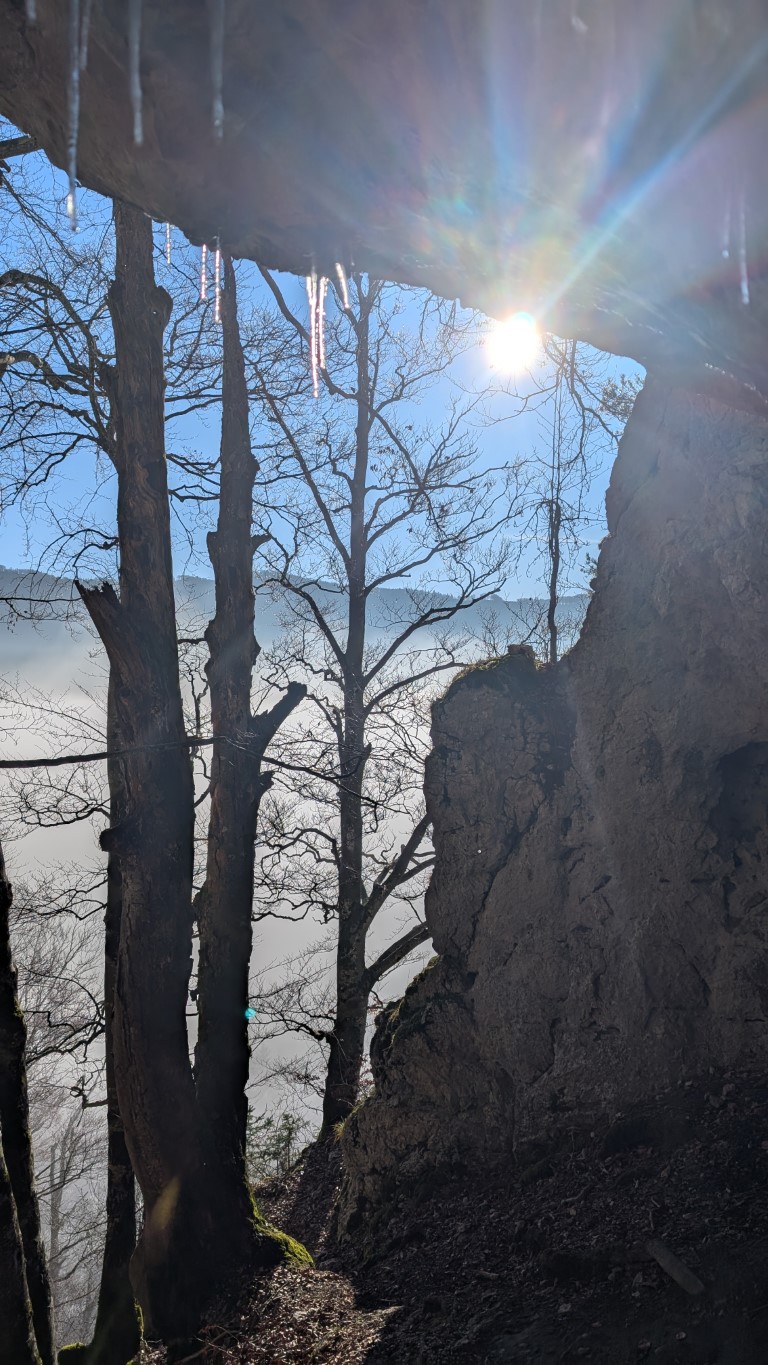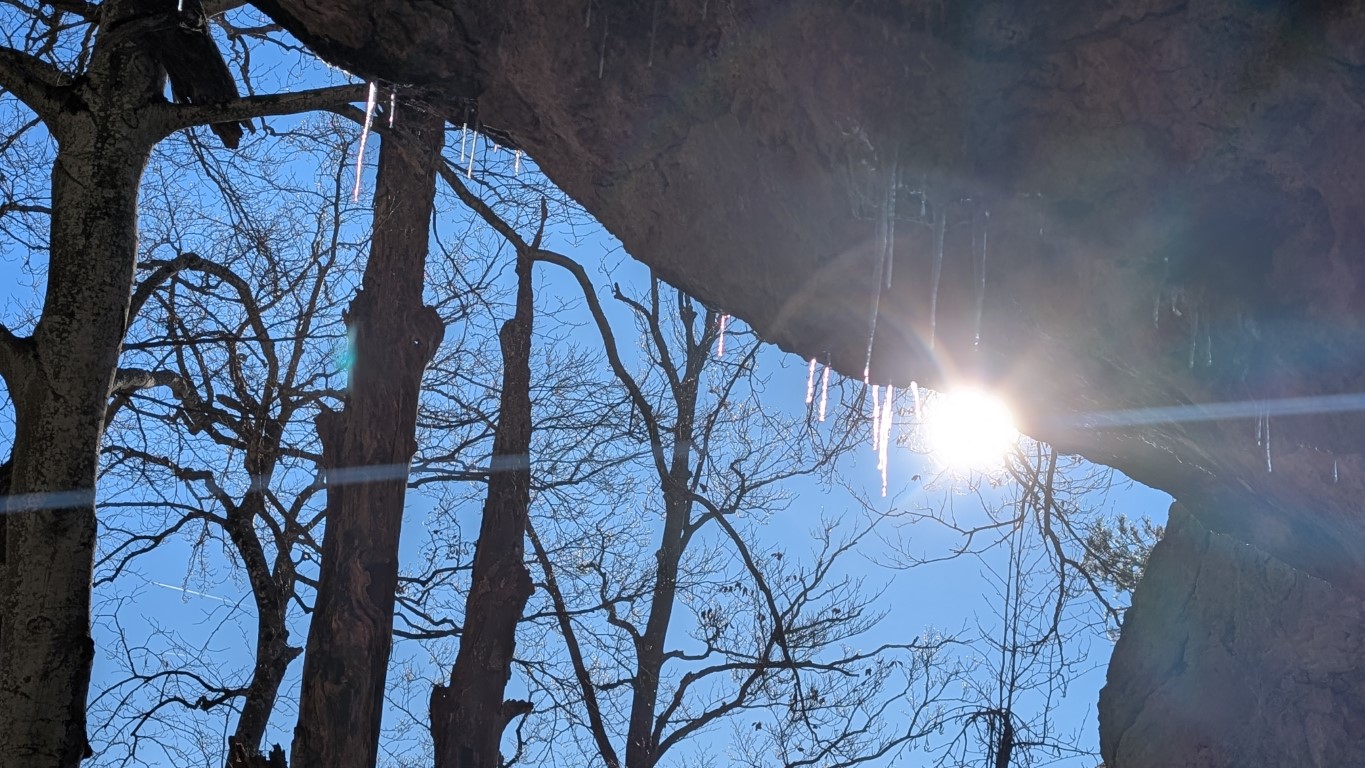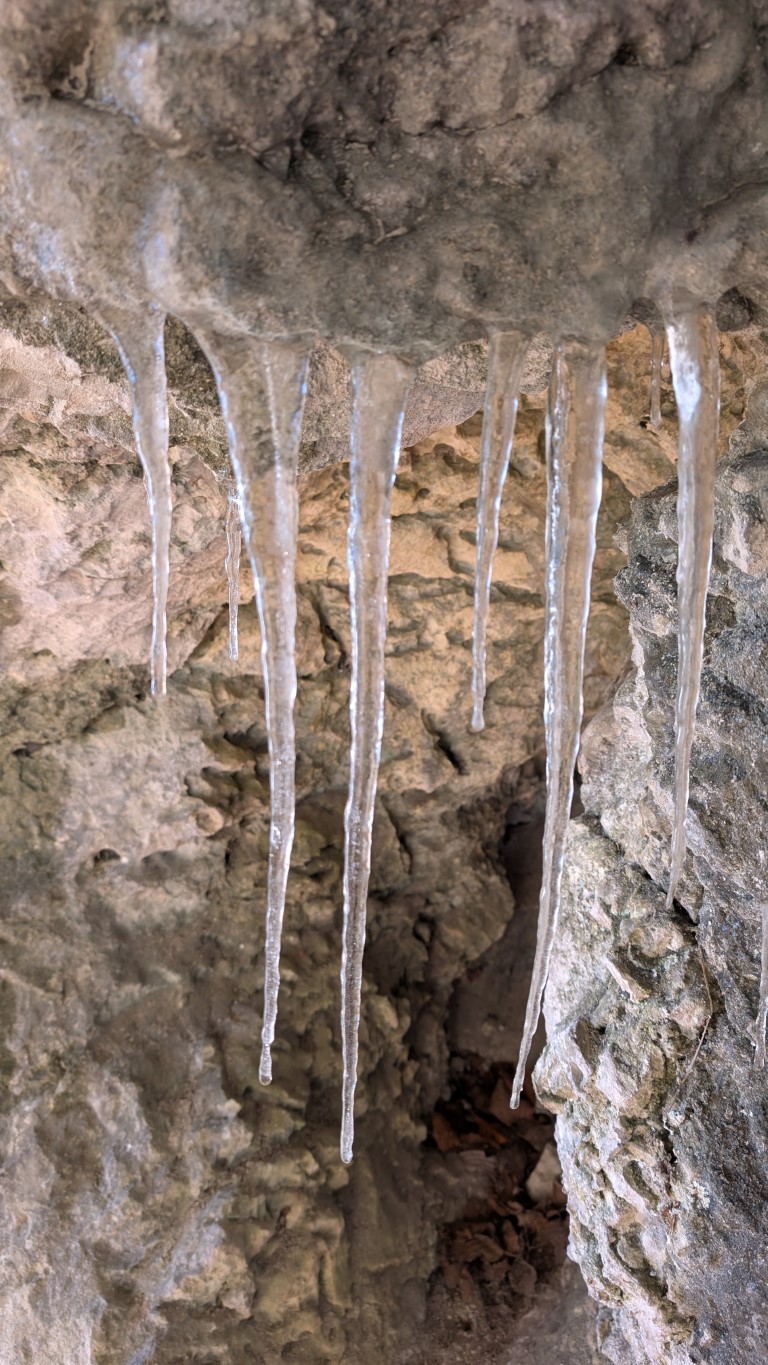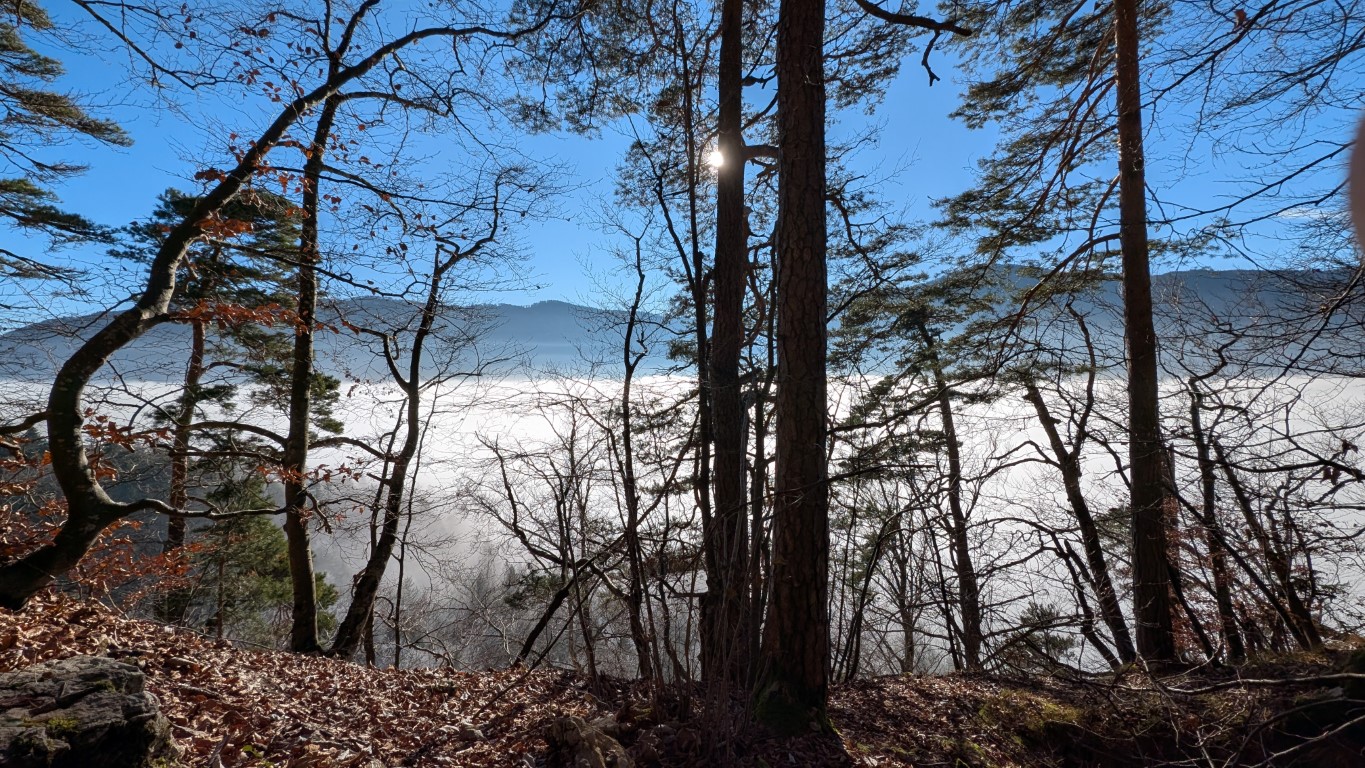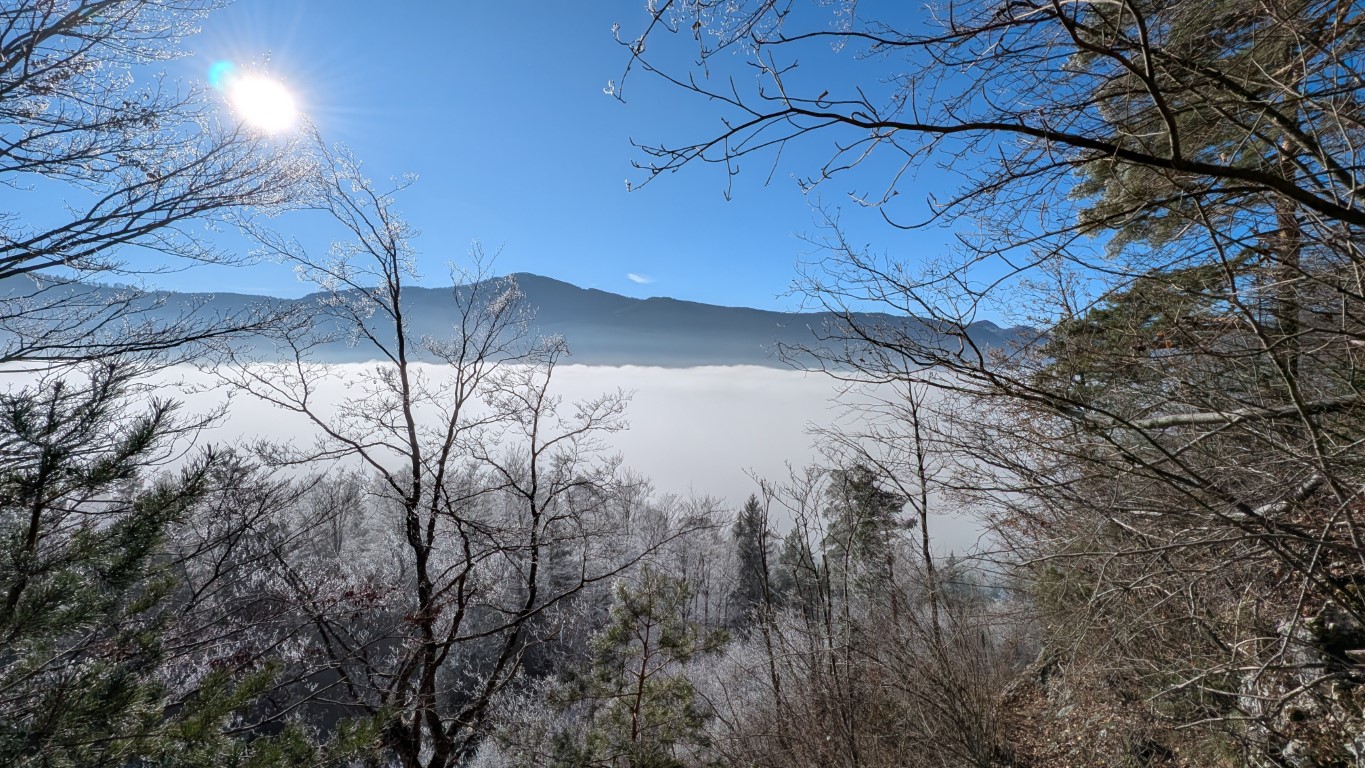The path to the Bärenloch is a journey that not only challenges the legs, but also nourishes the soul. First, the path carefully winds over a narrow ledge of rock, which seems almost awe-inspiring in its ruggedness. The closer you get to the destination, the steeper the climb becomes - a test of surefootedness and determination. But the reward follows quickly: suddenly, as if from nowhere, a mighty stone portal opens on the right. Thirty meters wide and twenty meters high, it towers up like a natural cathedral, built by the patience of millennia. Light falls through a crack in the ceiling, painting golden patterns on the cool rock face and reinforcing the sacred grace of the room.
Inside, you are surrounded by a deep silence that is more than just the silence of the world - it seems to come from a time when people still lived in harmony with nature. At the same time, the view outside, into the wide valley and the rugged northern side of the Balmberg, beckons. From here, the world below seems small and distant, and your heart feels light, as if it could fly over the landscape with the wind. But in the midst of this freedom, you feel strangely safe, as if in a stone cradle that gently envelops the hiker.
The story of the Bear Hole carries a mysterious echo. The idea is that bears may have once found rest here - those majestic creatures that embodied both fear and awe for our ancestors. Perhaps this cave was a place where the early inhabitants of the region carved their faith into the dance of light and shadow, in ceremonies that seem lost to us today. Finds in the area suggest that people have lived in these valleys for thousands of years. Their relationship with nature was more intimate, and caves like the Bear Hole were considered sacred thresholds between worlds.
There is something ancient in the atmosphere of the cave - a depth that is almost tangible. For those who open themselves to it, it feels like the whisper of a forgotten prayer that has been carried through the centuries. But with the disappearance of the bears from Europe, part of this ancient connection also fell silent. Shamans say that with the bears we also lost a part of our own soul. Here, in this quiet, venerable space, the thought may arise of wishing them a return - not just to the forests, but to the deep layers of our being.
The Balm Giant
Anyone who comes down the Oberer Leberberg on foot or by bike will see the petrified face of a strange old man at the Balmfluechöpfli. He hangs sullenly on the edge of the abyss and looks across to Central Switzerland. This is the Balmries.
In ancient times, huge families lived in our area - in the Jura, in the foothills of the Alps and in the Alps. As is often the case, they often had a fight with each other. The Pilatusries in particular, a huge rascal, could not resist using the Jura walls as targets and hurling stones across. Even today, the many erratic blocks on the southern slopes of our mountain bear witness to his wild activities.
One day, however, he took it too far. Pilatusries dragged a huge stone - as big as a house - and wanted to throw it over the Jura chain to smash the most beautiful peaks. Balmries, outraged by this presumption, stood in his way. It happened as it had to: a huge argument broke out.
The two giants got into a furious duel. Stones flew, boulders shattered, the earth shook. The Balmries grabbed the Pilatusries by the leg and brought him down. But the Pilatusries was just as tough and got back up. With a powerful blow he sent the Balmries to the ground. The latter remained lying there for a while before fighting his way back with a mighty push.
The battle raged back and forth, and the earth groaned under its weight. Finally, however, the Pilatusries made a mighty leap, grabbed the Balmries and slammed him onto his back with a mighty jerk. The Balmries lay motionless. He just stared as the Pilatusries proudly marched across the land. In his anger and shame he remained still - and turned to stone.
The huge boulder that the Pilatusries dropped can still be admired today at Steihof. Even though much of it was blown away, it is still an impressive sight. The two hollows that were created during the battle have filled with water. They are now known as the Burgäschisee and the Bolkesee.
This is the story of the two impetuous giants whose powers once moved mountains and shaped landscapes – and whose legacy remains visible in our landscape to this day.
Access
The cave is accessible after a steep climb. Bring sturdy shoes.











